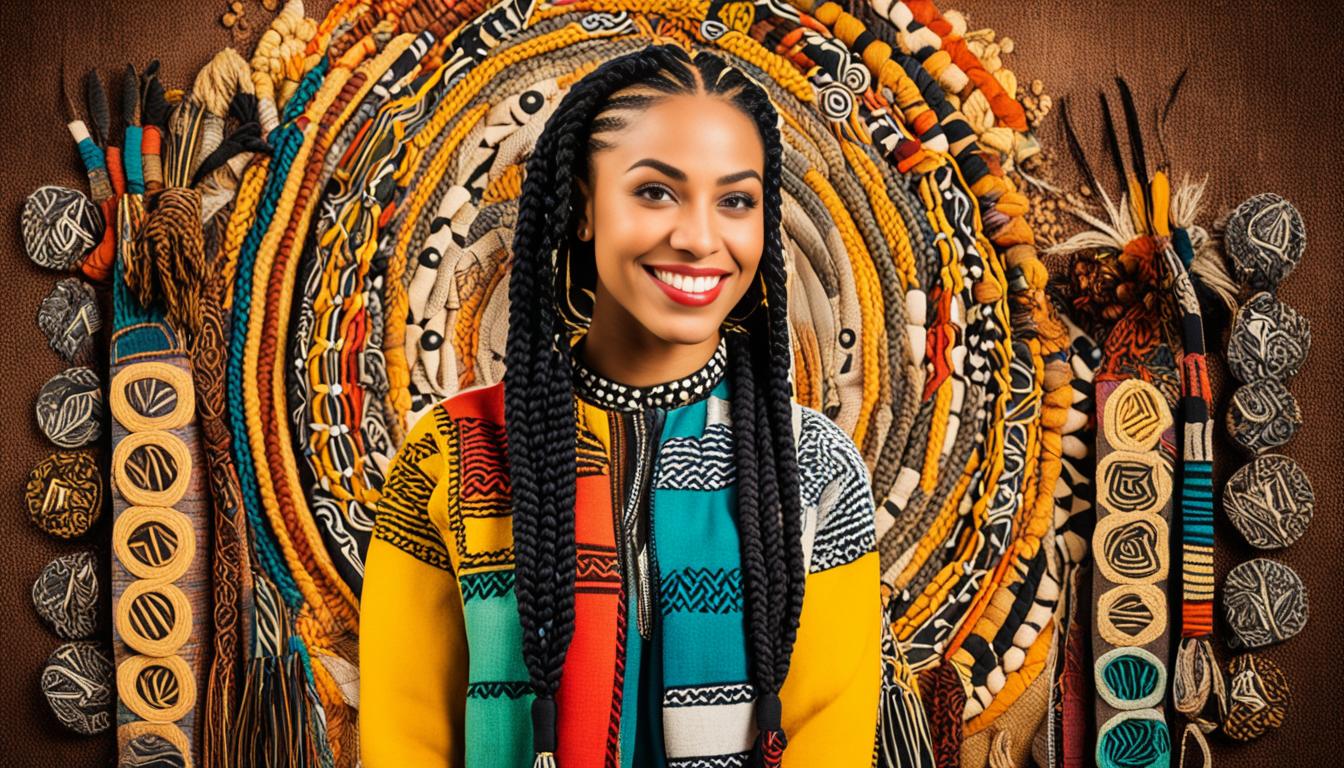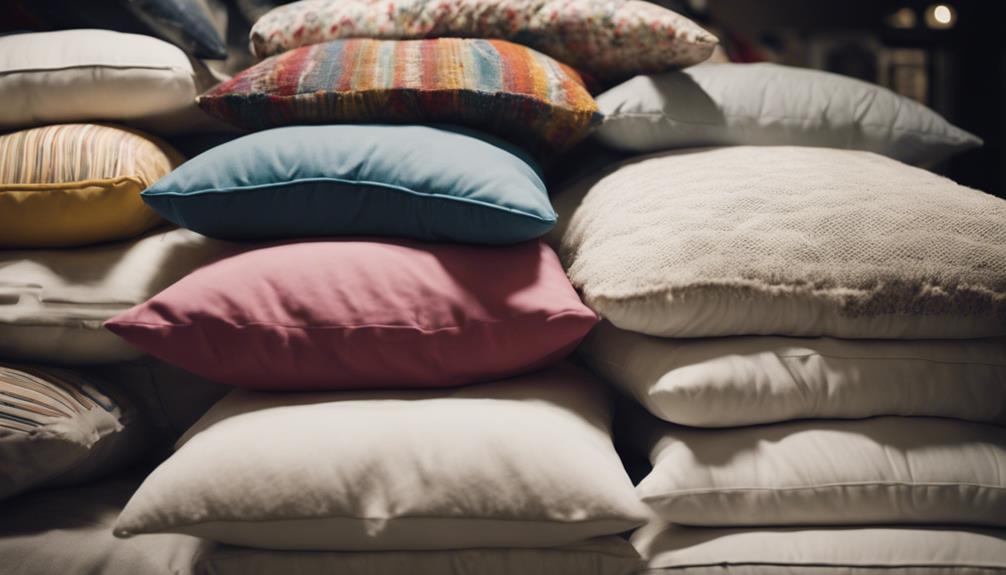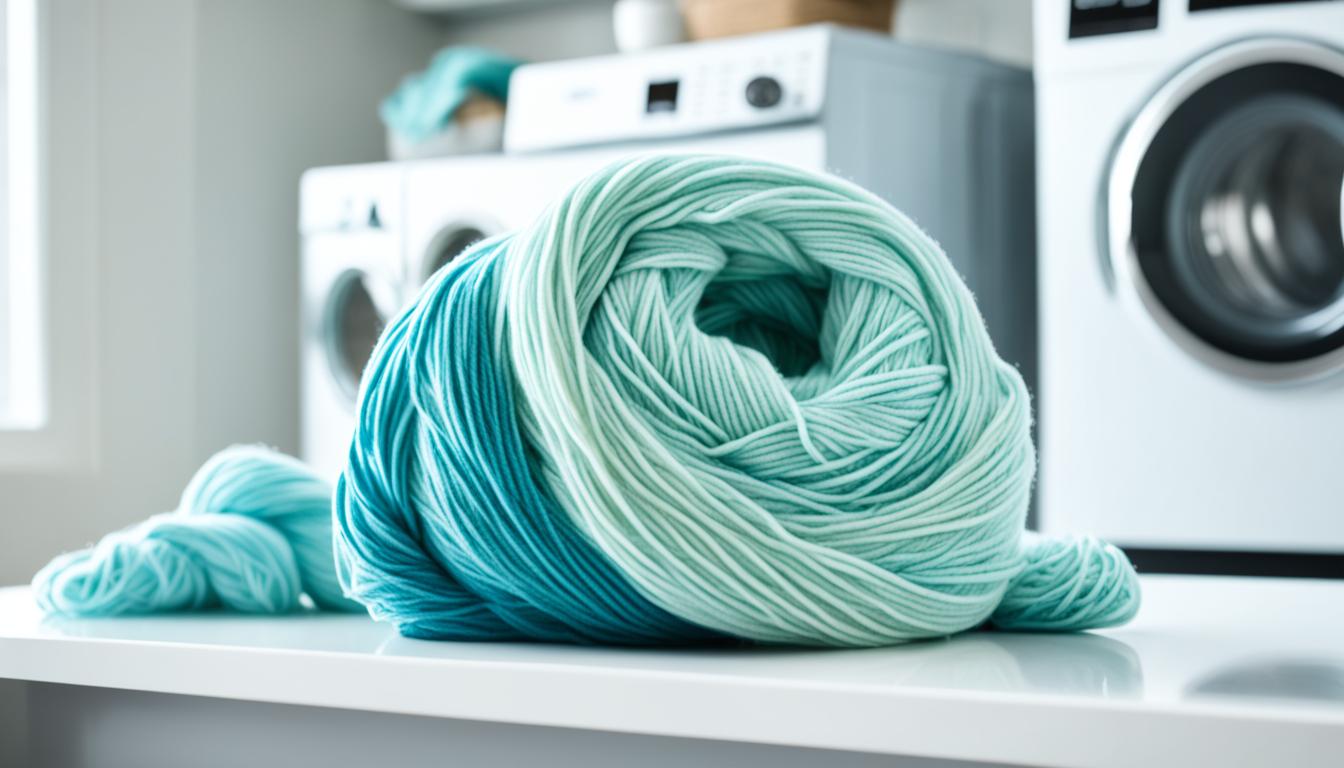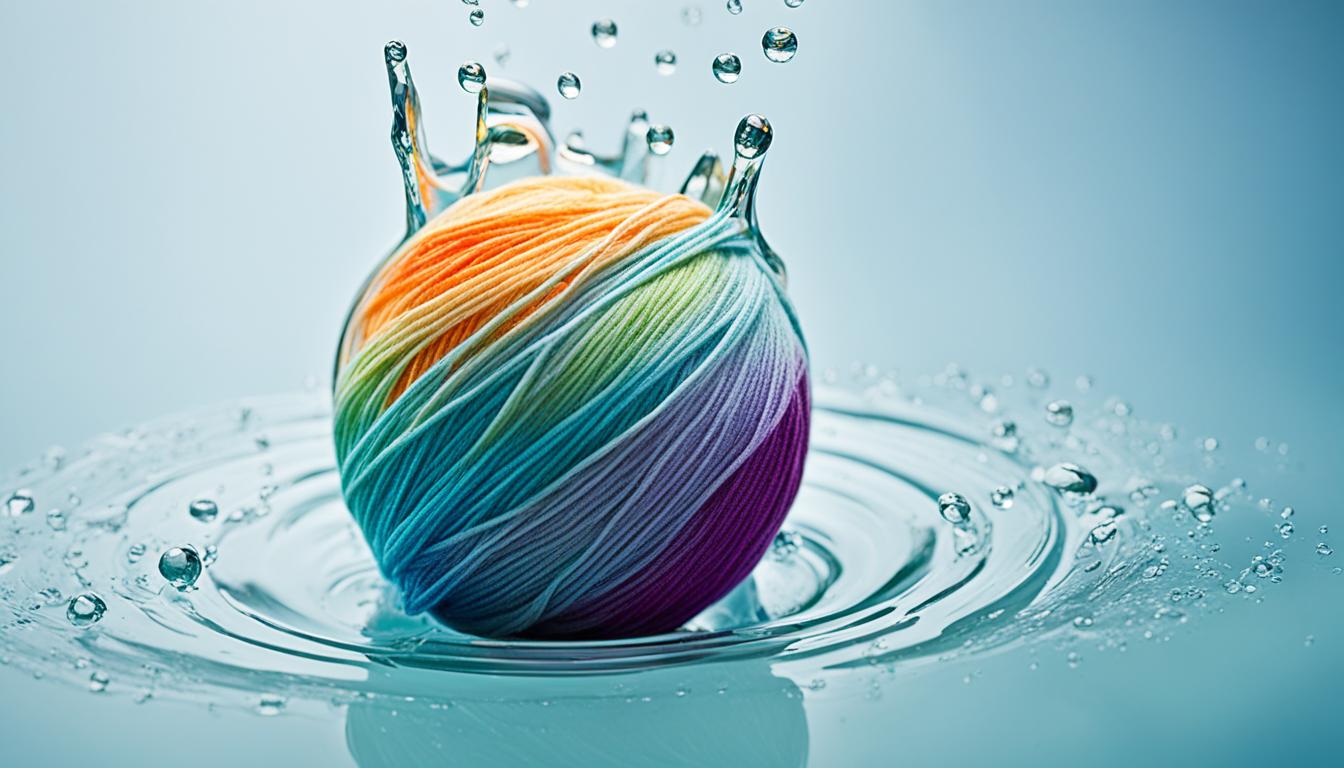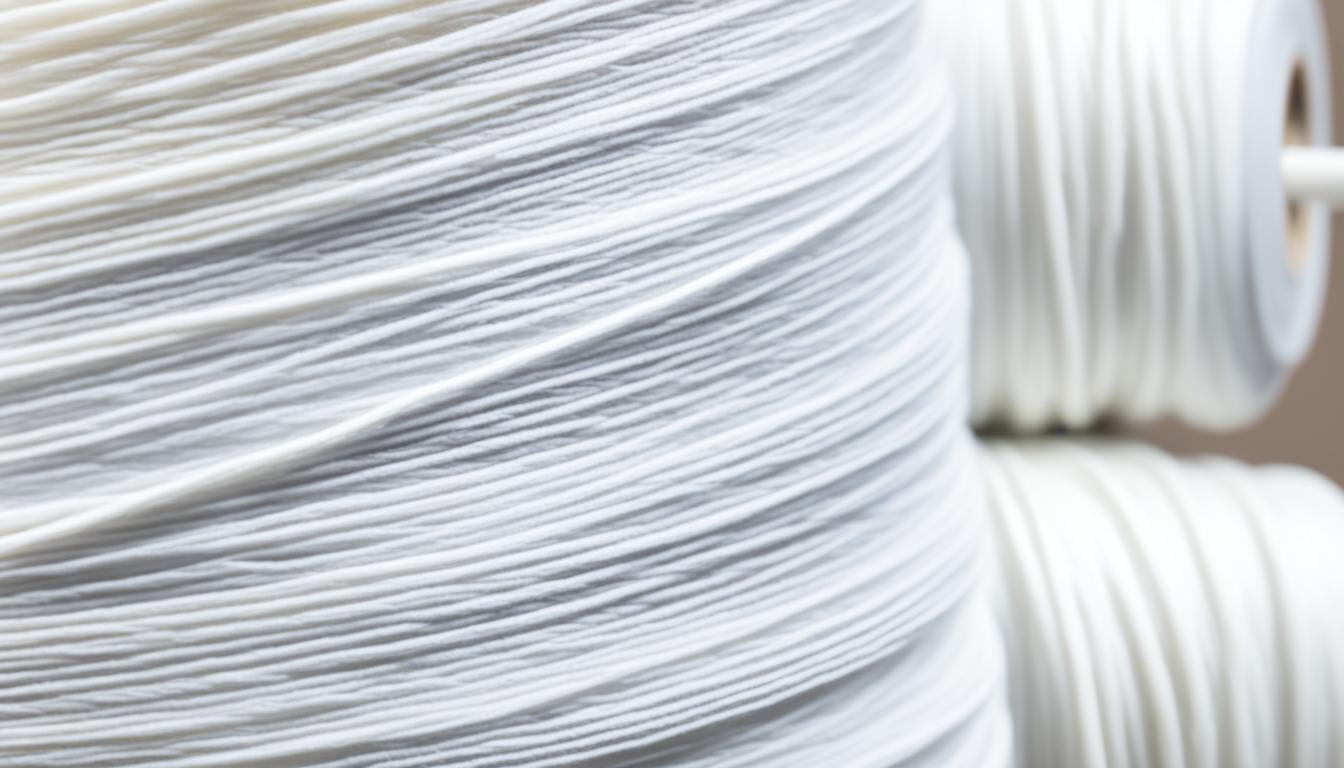Yarn braids have become popular in the realm of hairstyles, yet they have also ignited a controversial discussion. Are yarn braids considered cultural appropriation? Is it disrespectful to sport them without knowing their cultural importance? This article will examine the cultural significance of yarn braids.
Yarn braids, as a hairstyle, have roots in various African cultures and hold significant cultural importance. Understanding the cultural context behind yarn braids is essential to appreciate their beauty and honor their heritage. Let’s unravel this complex debate together!
Key Takeaways:
- Yarn braids are a hairstyle that has its origins in various African cultures.
- Cultural appropriation refers to adopting elements from a culture without understanding or respecting their significance.
- Yarn braids can be seen as a form of cultural identity and a way to express one’s heritage.
- Not all braided hairstyles are considered cultural appropriation; it depends on their cultural ties and significance.
- Approaching yarn braids with cultural appreciation and respect is crucial.
Understanding Cultural Appropriation
Cultural appropriation is a complex issue that arises when elements from one culture are adopted by individuals from another culture without proper understanding or respect for their cultural significance. In the context of hair and hairstyles, cultural appropriation can be a sensitive topic. One hairstyle that has been subject to this debate is yarn braids, which have roots in various African cultures and hold significant cultural relevance.
Cultural appropriation implies a lack of appreciation for the heritage and significance behind a particular style. Yarn braids, also known as thread wraps or genie locs, have a long history within African cultures, and they carry deep cultural symbolism and meaning. It is crucial to approach the topic of yarn braids with an understanding of their cultural context and a respect for the cultural heritage surrounding them.
By recognizing the cultural relevance of yarn braids, we can engage in a more meaningful dialogue around the appropriation of hairstyles. Understanding the origins and cultural significance behind yarn braids enables us to appreciate their beauty and respect the heritage they represent. It also fosters a deeper understanding of the importance of cultural preservation and celebration.
“Cultural appropriation implies a lack of appreciation for the heritage and significance behind a particular style.”
Appreciating and understanding the cultural relevance of yarn braids empowers us to combat the negative impact of cultural appropriation. It allows us to celebrate diversity and promote inclusivity, rather than perpetuating harmful stereotypes or disregarding the significance of certain hairstyles.
Honoring Heritage through Yarn Braids
Yarn braids not only showcase creative and stunning aesthetics, but they also serve as a reflection of African heritage and cultural identity. Each braid tells a story, representing a connection to specific African communities, tribes, and traditions. Wearing yarn braids with respect and mindfulness acknowledges the rich history they encompass and appreciates the diverse cultures they originate from.
| Key Points | Explanation |
|---|---|
| Yarn braids have roots in various African cultures | This hairstyle is deeply rooted in African traditions and carries cultural significance. |
| Understanding their cultural context is essential | Appreciating the cultural background of yarn braids promotes respect and inclusivity. |
| Yarn braids reflect African heritage and cultural identity | Each braid holds a deeper meaning, connecting individuals to their specific cultural roots. |
| Mindful wearing of yarn braids honors their cultural significance | Respecting the heritage behind yarn braids is crucial in combating cultural appropriation. |
The Origins of Yarn Braids
Yarn braids have deep roots in various African cultures, where braiding has been a cherished tradition for centuries. Different tribes have showcased their unique braid patterns, each with its own cultural significance. Yarn braids have emerged as a distinctive style within this broader tradition, blending elements of creativity and cultural expression. Understanding the origins of yarn braids is key to appreciating their cultural significance and the craftsmanship involved.
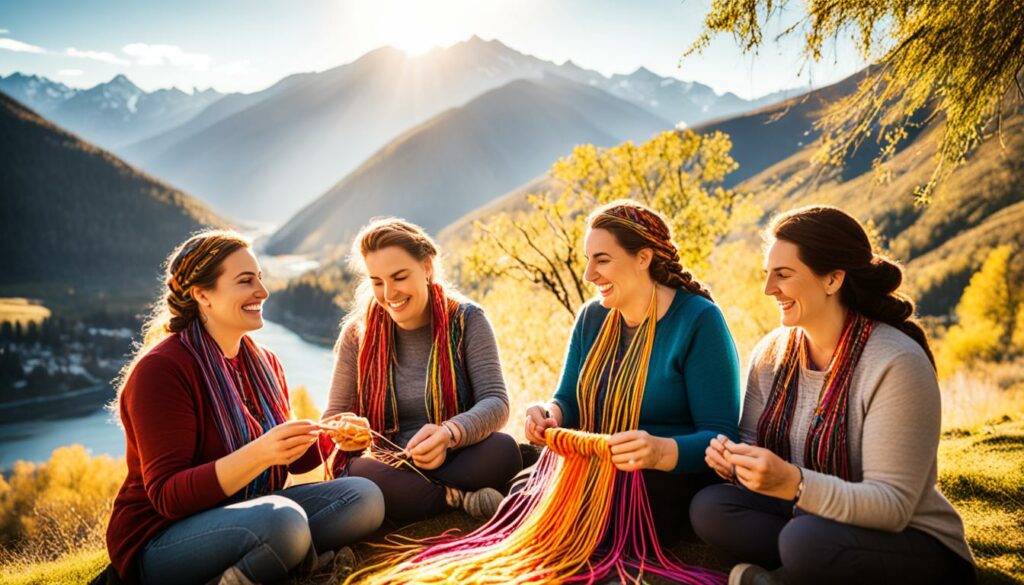
Through generations, African communities have developed intricate braiding techniques that are passed down from one an generation to the next. These techniques often hold symbolic meanings and are used as a form of self-expression, conveying social status, tribe affiliation, and individual identity. Yarn braids, with their vibrant colors and unique texture, represent a fusion of traditional braiding techniques and contemporary style.
The art of yarn braiding combines creativity and cultural pride, making it more than just a hairstyle. Each braid is a work of art, reflecting the personal style and cultural heritage of the person wearing them. The use of yarn adds texture, depth, and versatility to the braids, allowing for endless possibilities in terms of color combinations and designs.
Influences from African Cultural Heritage
The origins of yarn braids can be traced back to various African braiding styles, such as cornrows, Senegalese twists, and box braids. These traditional styles have been reimagined and adapted over time, incorporating yarn as a means to enhance their visual impact and create unique looks.
“Yarn braids are a celebration of our African cultural heritage. They are not just a fashion statement; they are a testament to the beauty and resilience of our people.”
The use of yarn in braiding was influenced by the resourcefulness and ingenuity of African communities. Instead of solely relying on natural hair fibers, which could be limited in supply, yarn provided a readily available and colorful alternative.
The Global Popularity of Yarn Braids
In recent years, yarn braids have gained popularity beyond African communities, attracting individuals from diverse cultural backgrounds. They have become a symbol of fashion-forwardness, creativity, and cultural appreciation.
By embracing yarn braids, people from various cultural backgrounds show their admiration for African heritage while also exploring their own personal style. Yarn braids provide an opportunity for cross-cultural exchange, fostering a deeper understanding and respect for diverse traditions and aesthetics.
Preserving Cultural Integrity
As yarn braids continue to gain popularity globally, it is important to remain mindful of their cultural origins and significance. When wearing yarn braids, it is essential to respect and honor the African heritage from which they emerged.
Appreciating yarn braids involves acknowledging the craftsmanship, symbolism, and cultural value they hold. It is important to avoid appropriating the style without understanding its history or reducing it to a mere trend. Instead, we should approach yarn braids with admiration, curiosity, and respect for their cultural roots.
By celebrating the origins of yarn braids and embracing the diversity of cultural practices, we can foster a more inclusive and appreciative society. Let us continue to learn, grow, and express ourselves through hairstyles that bridge cultural gaps and showcase our shared humanity.
Yarn Braids and Cultural Identity
Yarn braids hold significant cultural importance for individuals who wear them. In African cultures, braided hairstyles often serve as a way to express one’s tribe, age, marital status, and even religious beliefs. Yarn braids can be seen as a form of cultural identity, representing a connection to heritage and tradition.
The intricate patterns and styles of yarn braids are more than just a fashionable trend. They carry deep symbolism and offer a sense of belonging and pride. For example, in certain African tribes, the intricate patterns of the braids can indicate tribal affiliation, while the size and length of the braids may represent age or social status.
Yarn braids are not merely a fashion statement; they are a way for individuals to celebrate and honor their cultural roots. By wearing yarn braids, people embrace their heritage, carry forward their traditions, and connect with their ancestors.
Moreover, yarn braids can foster a sense of community and promote cultural unity. When individuals wear these braids, they become part of a larger cultural narrative, linking them to their fellow community members and creating a shared bond.
The Cultural Significance of Yarn Braids
Yarn braids are more than just a hairstyle; they symbolize a celebration of culture, pride, and identity.
Yarn braids are not just a trend; they are a way for individuals to express their cultural identity and proudly showcase their heritage. By wearing yarn braids, individuals pay homage to the craftsmanship, creativity, and history of African hair braiding.
The cultural significance of yarn braids extends beyond aesthetics. They serve as a visual reminder of the resilience, strength, and beauty of African cultures. Yarn braids carry stories, traditions, and ancestral wisdom, encapsulating a vibrant tapestry of African heritage.
It is important to recognize and respect the cultural significance of yarn braids. We should appreciate the beauty and meaning behind this hairstyle and understand that it is more than just a fashion choice. By embracing yarn braids, we celebrate the diversity and rich cultural tapestry that defines our world.
The Power of Cultural Identity Through Yarn Braids
Yarn braids empower individuals to embrace their cultural identity and celebrate their unique heritage. For many, it is a way of reclaiming and preserving their cultural traditions, which may have been marginalized or underrepresented in mainstream society.
Through yarn braids, individuals can assert their cultural pride and challenge dominant narratives that have historically marginalized people of African descent. This hairstyle allows for self-expression, encouraging individuals to reclaim their narratives and rewrite the story of their cultural identity.
Yarn braids serve as a statement of cultural resistance, highlighting the beauty and resilience of African cultures. They provide a platform for individuals to showcase their heritage to the world and challenge the stereotypes and misconceptions that may surround their cultural identity.
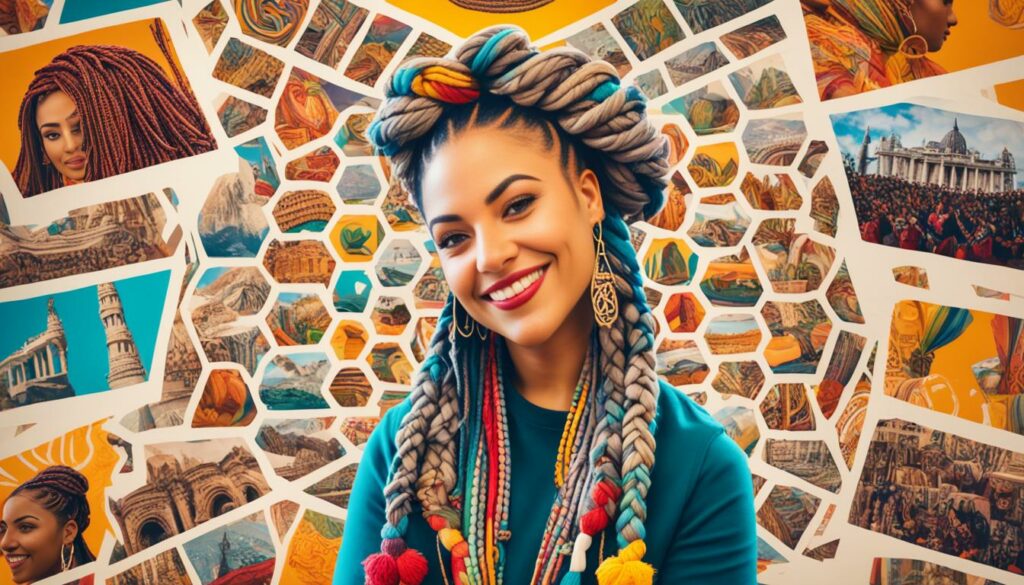
In the face of cultural appropriation and the erasure of cultural traditions, yarn braids become a powerful tool for cultural preservation and empowerment. By wearing yarn braids, individuals reaffirm their connection to their roots, bringing visibility and recognition to their cultural heritage.
In conclusion, yarn braids are not simply a hairstyle; they represent the cultural identity, pride, and connection to heritage for individuals who wear them. Yarn braids weave together a tapestry of stories, traditions, and ancestral wisdom, celebrating the beauty and resilience of African cultures. By embracing and respecting the cultural significance of yarn braids, we foster inclusivity, appreciation, and a deeper understanding of the diverse world we inhabit.
Controversy Surrounding Yarn Braids
Yarn braids have sparked a heated controversy in recent times, igniting intense debates surrounding the issue of cultural appropriation. On one side of the spectrum, critics argue that wearing yarn braids without acknowledging their cultural significance can be perceived as offensive and disrespectful. They emphasize the importance of understanding and respecting the cultural history and heritage associated with this unique hairstyle.
Conversely, proponents of cultural exchange contend that cultural borrowing and inspiration have been fundamental aspects of human history and should be celebrated rather than criticized. They argue that appreciating diverse hairstyles is a way to bridge cultural gaps, promote inclusivity, and foster understanding among different communities.
“The controversy surrounding yarn braids serves as a catalyst for introspection and thought-provoking discussions about cultural appreciation and understanding.”
It is essential to recognize that debates on cultural appropriation are often multifaceted and nuanced. However, engaging in open dialogue and striving to comprehend different perspectives can contribute to a more informed and inclusive society. By focusing on cultural appreciation rather than merely appropriating aspects of a culture, we can promote mutual respect and appreciation for the diverse world we live in.
To provide a broader context, let’s examine different viewpoints and observations related to the yarn braids controversy. Through this exploration, we aim to shed light on the significance of cultural appropriation and foster a deeper understanding of its implications.
The Impact on Cultural Appreciation
One aspect of the yarn braids controversy revolves around the impact it has on cultural appreciation. Critics caution against the superficial adoption of cultural elements without genuinely embracing and understanding their historical and cultural significance. They believe that it is crucial to engage in meaningful conversations about cultural practices and traditions, fostering respect and appreciation for marginalized communities and their unique contributions.
On the other hand, supporters of cultural exchange argue that wearing yarn braids can serve as a form of admiration and appreciation for the beauty and artistry of the hairstyle. They assert that by sharing and celebrating cultural practices, individuals can bridge gaps, break down stereotypes, and promote cultural understanding in our increasingly diverse society.
Respecting Cultural Heritage
A fundamental aspect of the yarn braids controversy is the question of respecting cultural heritage. Critics argue that cultural appropriation harms communities by commodifying or diluting their traditions without giving credit to their origins. They emphasize the importance of acknowledging and honoring the cultural heritage that yarn braids represent.
Supporters of cultural exchange stress the need for responsible engagement with cultural practices. They advocate for learning and understanding the history and cultural significance of yarn braids and ensuring that they are worn with respect and appreciation for their origins. They emphasize the importance of building bridges between cultures while honoring and preserving their distinct identities.
As we navigate the intricate discussions surrounding yarn braids, let us strive for empathy, understanding, and a commitment to promoting inclusivity and cultural appreciation. By actively engaging with one another and valuing the rich diversity that exists in our world, we can foster an environment of mutual respect and appreciation.

Different Braided Hairstyles and Cultural Appropriation
When discussing the cultural appropriation of yarn braids, it is essential to understand that not all braided hairstyles fall into this category. Certain braided styles, such as French braids or fishtail braids, do not possess specific cultural significance and are widely accepted as universal hairstyles. These styles have become popular across various cultures purely for their aesthetic appeal and versatility.
However, other braided hairstyles have deep cultural roots and can be seen as appropriative when worn without understanding or respecting their cultural context. Yarn braids, for example, trace their origins to African cultures and hold cultural significance within these communities.
While it is crucial to acknowledge and appreciate the beauty of various braiding styles, including yarn braids, it’s equally important to distinguish between cultural exchange and cultural appropriation. Cultural appreciation involves understanding the cultural context, respecting its heritage, and celebrating diversity. On the other hand, cultural appropriation primarily focuses on taking elements of a culture without proper understanding or acknowledgment.
By recognizing the historical and cultural significance of different braided hairstyles, we can ensure that we approach them with respect and appreciation. It is essential to educate ourselves on the cultural origins of specific styles, such as yarn braids, and avoid appropriative behavior.
“Cultural appreciation involves understanding the cultural context, respecting its heritage, and celebrating diversity.”
When considering different braided hairstyles, it’s crucial to be mindful of their cultural significance and the potential impact of cultural appropriation. By honoring and embracing diverse cultural traditions, we can foster a more inclusive and respectful environment for all.

Cultural Significance of African Braids
African braids, including yarn braids, hold a significant cultural significance. For centuries, these braided hairstyles have been used to represent various aspects of African culture, such as religion, age, kinship, and marital status. Different African tribes have developed unique braiding techniques and styles, making each braid pattern distinct and meaningful.
Braids are not merely a hairstyle but a reflection of cultural heritage, carrying stories and traditions that have been passed down through generations. They serve as a form of artistic expression and a way of connecting to one’s roots.
The cultural significance of African braids goes beyond aesthetics, as they are deeply intertwined with identity and community. Through intricate braiding techniques, tribes communicate their values and beliefs, paying homage to their ancestors and honoring their cultural heritage.
Embracing African braids means embracing the beauty of diversity and celebrating the rich cultural tapestry that exists within the African continent. By understanding the cultural significance of these braided hairstyles, we can appreciate their beauty and significance in a more meaningful way.
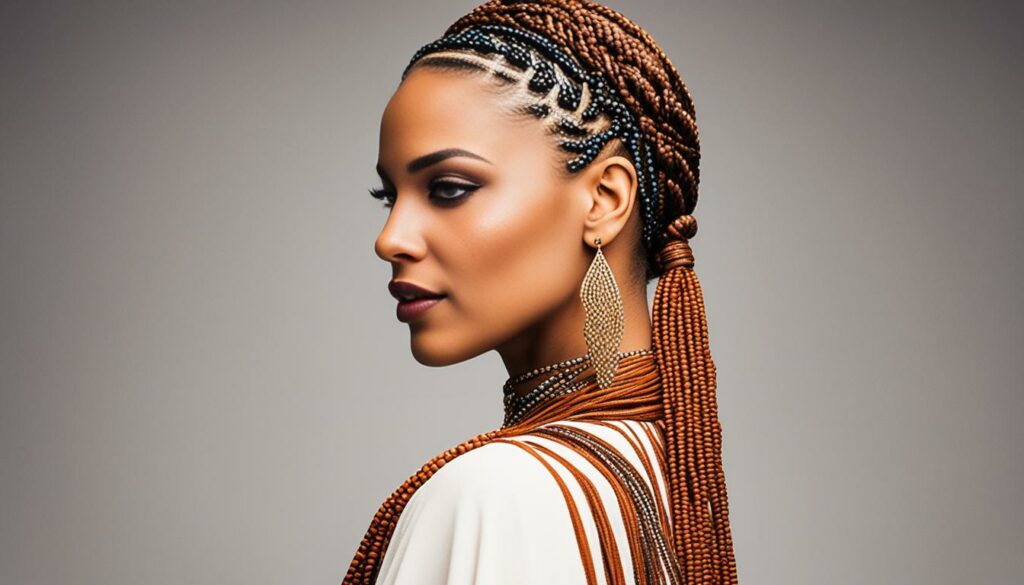
Examples of Culturally Appropriative Braided Hairstyles
While discussing cultural appropriation and braided hairstyles, it’s important to note that not all braids are considered as such. However, there are certain styles that have faced criticism for appropriating specific cultures. Here are some examples of braided hairstyles that have deep cultural roots in African traditions and can be seen as appropriative when worn by individuals from outside those cultural backgrounds:
- Ghana braids
- Fulani braids
- Bantu knots
- Box braids
These hairstyles, originating from African cultures, hold significant cultural relevance and are often worn as expressions of tradition and identity. Wearing them without understanding or respecting their cultural context can be seen as appropriative.
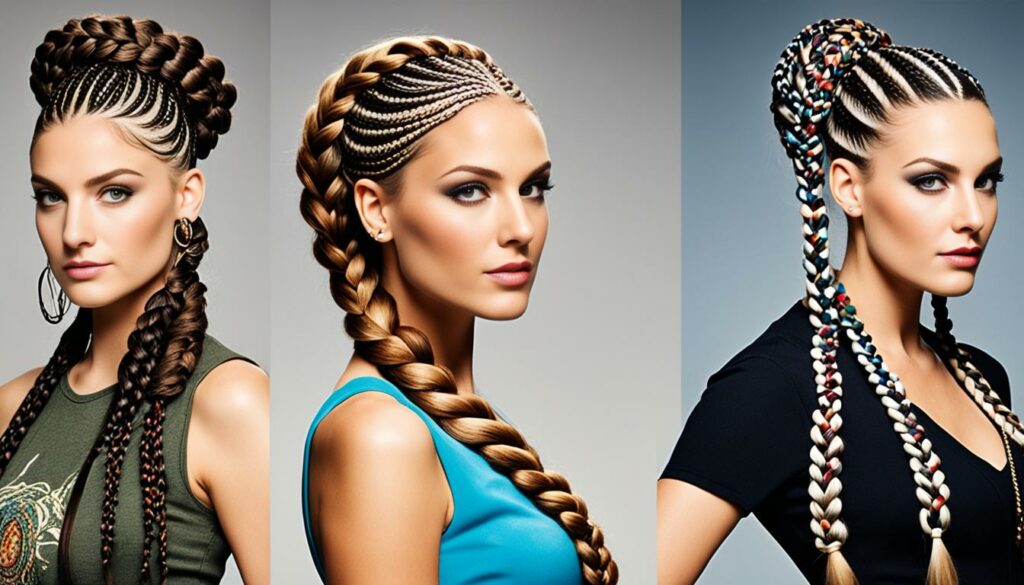
Throughout history, hairstyles have played an important role in cultural identity and are deeply rooted in traditions. It’s crucial to recognize and appreciate the cultural heritage behind certain braided styles to avoid appropriation and promote cultural appreciation. Let’s continue the discussion by exploring braided hairstyles that do not constitute cultural appropriation.
Braids That Are Not Cultural Appropriation
While the debate around cultural appropriation of braided hairstyles remains complex, it’s important to note that there are many braids that do not constitute cultural appropriation. These styles can be worn by individuals from diverse backgrounds without appropriating specific cultural traditions.
Pigtail Braids
Pigtail braids, also known as twin braids, are a popular hairstyle that involves dividing the hair into two sections and braiding each section separately. This style is not tied to any specific cultural tradition, making it a versatile choice for anyone.
Halo Braid
The halo braid is a stunning braided hairstyle where the hair is wrapped around the head in a circular shape, resembling a halo. This elegant and ethereal style is universally admired and can be worn by individuals of any cultural background.
Elsa Braid
The Elsa braid gained popularity after the release of Disney’s “Frozen.” Inspired by the iconic character Queen Elsa, this hairstyle features a single braid cascading over one shoulder. The Elsa braid is a fun and whimsical choice that can be worn by anyone looking to channel their inner ice queen.
French Braid
The French braid is a classic and timeless hairstyle that involves weaving three strands of hair together. This versatile braid can be worn in various iterations, such as a simple braid down the back or a chic French braid updo. Its universal appeal makes it suitable for individuals of any cultural background.
Crown Braid
The crown braid is a beautiful braided style where the hair is braided in a circular pattern around the head, resembling a crown. This feminine and regal hairstyle can be adorned with flowers or accessories to enhance its elegance.
Staircase Braid
The staircase braid, also known as the ladder braid, is a unique braided style that creates the illusion of a staircase or ladder. This intricate and eye-catching hairstyle is a creative choice suitable for various occasions.
Dutch Braid
The Dutch braid, also called an inverted French braid, is a reverse version of the French braid. This braid involves crossing the strands under each other, creating a beautiful texture and an elegant look.
Three-Strand Braid
The three-strand braid is a simple and versatile style that involves weaving three strands of hair together. This basic yet timeless braid can be worn casually or dressed up for formal events.
Fishtail Braid
The fishtail braid, also known as the herringbone braid, is a trendy and intricate style that creates a woven pattern resembling a fishtail. This stylish braid adds a touch of bohemian charm to any look and can be worn effortlessly by anyone.
Chinese Ladder Braid
The Chinese ladder braid is a unique and visually captivating hairstyle that resembles a ladder. This braided style adds a modern twist to traditional braids and can be worn by individuals of different cultural backgrounds.
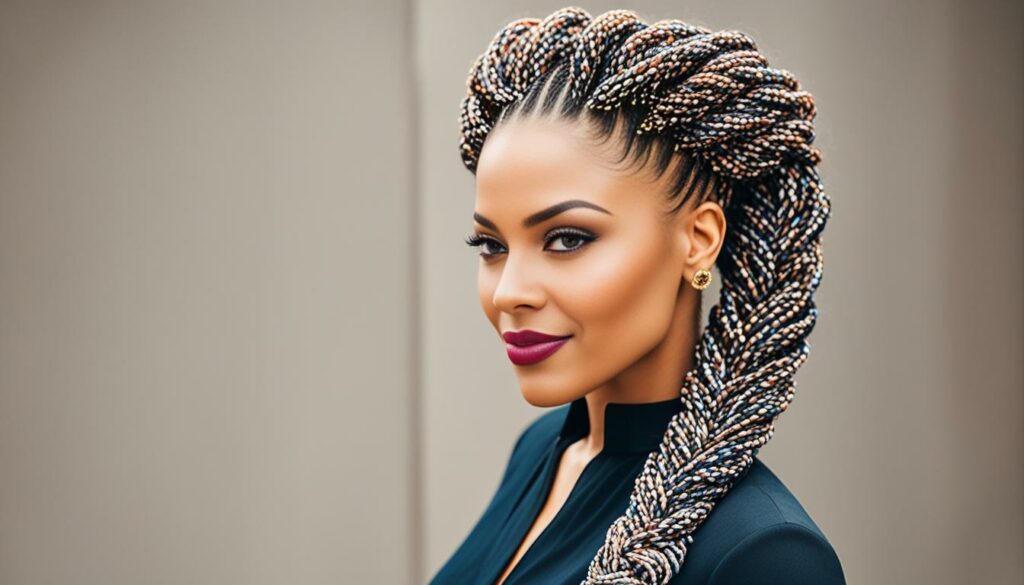
| Braid Style | Features |
|---|---|
| Pigtail Braids | Versatile; suitable for all backgrounds |
| Halo Braid | Elegant and ethereal; universally admired |
| Elsa Braid | Fun and whimsical; inspired by Disney’s “Frozen” |
| French Braid | Classic and timeless; versatile in style |
| Crown Braid | Feminine and regal; can be adorned with accessories |
| Staircase Braid | Intricate and eye-catching; creates the illusion of a staircase |
| Dutch Braid | Reverse version of the French braid; adds texture |
| Three-Strand Braid | Simple and timeless; suitable for any occasion |
| Fishtail Braid | Trendy and intricate; adds bohemian charm |
| Chinese Ladder Braid | Unique and visually captivating; modern twist on traditional braids |
Embracing Cultural Appreciation
Instead of focusing solely on the debate around cultural appropriation, let’s shift the conversation towards cultural appreciation. It is important for us to embrace cultural diversity and understand the significance of different hairstyles, such as yarn braids, to promote inclusivity and respect.
“Cultural appreciation allows us to celebrate the beauty and richness of various cultures, recognizing their unique contributions to our society.”
By acknowledging and appreciating the cultural heritage behind certain styles like yarn braids, we can foster a more inclusive society. It’s about recognizing the artistry, creativity, and deep-rooted traditions that these hairstyles represent.
Embracing cultural diversity also means understanding that there is more to hairstyles like yarn braids than just a trendy fashion statement. They carry historical, social, and cultural significance that should be respected and honored.
Appreciation goes beyond mere tolerance; it involves actively seeking to understand and learn from different cultures. When we take the time to educate ourselves about the cultural significance of hairstyles like yarn braids, we can develop a deeper appreciation for the traditions and customs associated with them.
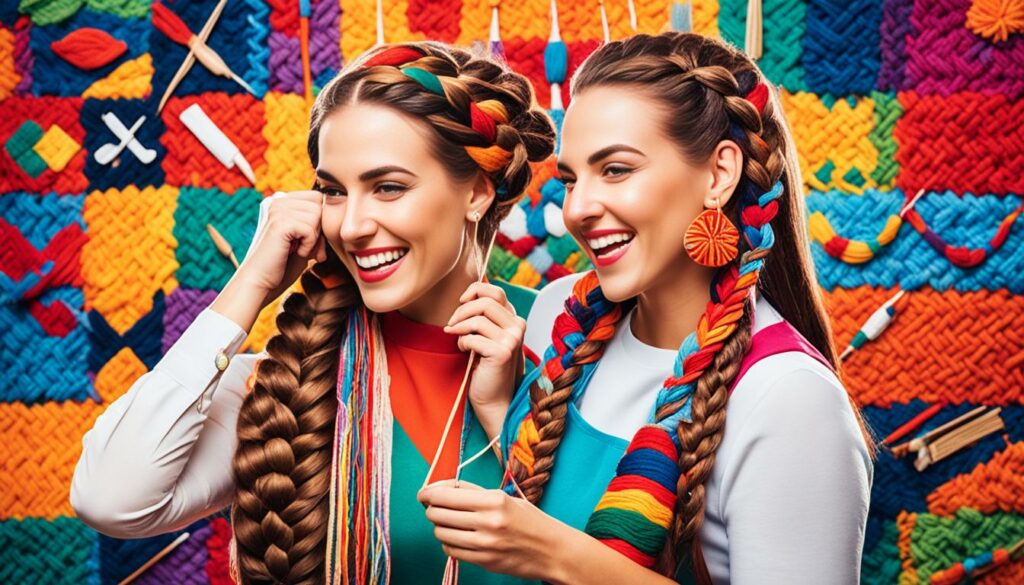
By embracing cultural appreciation, we create an environment where individuals from different backgrounds can feel valued and respected. It encourages dialogue, empathy, and a celebration of diversity.
Let’s remember that cultural appreciation is not about appropriating or exploiting other cultures. It is about showing respect, learning, and fostering understanding. It’s about recognizing and valuing the contributions that different cultures have made to our collective human experience.
Fostering a Culture of Inclusion
To foster a culture of inclusion and embrace cultural appreciation:
- Take the time to learn about different cultures and their traditions.
- Engage in meaningful conversations with individuals from diverse backgrounds.
- Challenge stereotypes and biases.
- Support and uplift voices from underrepresented communities.
- Seek out opportunities to learn from and experience different cultures firsthand.
Remember, cultural appreciation is a lifelong journey of growth and understanding. By embracing and celebrating cultural diversity, we can create a more inclusive and harmonious world for everyone.
How to Approach Yarn Braids Responsibly
If you are interested in wearing yarn braids, it is essential to approach them responsibly. By educating ourselves about the cultural significance and history of yarn braids, we can ensure that we wear them respectfully and do not engage in cultural appropriation.
Respecting the heritage behind the hairstyle is crucial to wearing yarn braids responsibly. Recognize that yarn braids have deep roots in various African cultures and hold significant cultural significance. They are not just a trendy hairstyle but a representation of rich traditions and heritage.
To ensure a responsible approach to wearing yarn braids, take the time to learn about the cultural context in which they originated. Understand the braiding techniques, the symbolism behind different patterns, and the cultural practices associated with yarn braids. This knowledge will help you appreciate the hairstyle and avoid appropriative behavior.
It’s also important to consider the source of your yarn braids. Opt for hair salons or braiders who specialize in African hairstyles and have a deep understanding of the cultural significance of yarn braids. Supporting individuals with the appropriate expertise ensures that you are engaging in a respectful and responsible way.
Respecting Cultural Boundaries
When wearing yarn braids, it’s crucial to respect cultural boundaries and avoid appropriative behavior. Avoid exoticizing or commodifying the hairstyle by treating it as a mere fashion statement. Instead, appreciate the cultural heritage and significance behind the braids.
“I believe that when we wear yarn braids, we should do so with an understanding and respect for the centuries-old traditions and cultural symbolism that they carry. It’s about celebrating diversity and honoring the communities from which they originate.” – Grace Johnson, Cultural Historian
By approaching yarn braids responsibly, we can contribute to a more inclusive society that celebrates cultural diversity. Let’s wear yarn braids with respect, honor their origins, and embrace the beauty of cultural traditions.

| Educate Yourself | Respect Cultural Heritage | Consider the Source |
|---|---|---|
| Learn about the cultural significance and history of yarn braids | Recognize that yarn braids are more than just a trendy hairstyle | Opt for hair salons or braiders who specialize in African hairstyles |
| Understand the braiding techniques and symbolism behind different patterns | Appreciate the cultural context in which yarn braids originated | Support individuals with expertise in African hairstyles |
| Avoid appropriative behavior | Respect cultural boundaries and avoid commodifying the hairstyle |
Conclusion
After delving into the complex and nuanced debate surrounding yarn braids and cultural appropriation, we have come to the understanding that it is crucial to approach this discussion from a place of cultural appreciation and respect. While some argue that wearing certain braided hairstyles without proper understanding may be appropriative, we believe that education, acknowledgement of cultural significance, and celebration of diversity are key in navigating this debate.
By educating ourselves about the origins and cultural significance of yarn braids, we can better appreciate their heritage and the communities from which they originate. This allows us to wear yarn braids in a way that reflects our genuine appreciation for the style without inadvertently disrespecting or appropriating the culture it comes from.
In conclusion, the importance of embracing cultural appreciation cannot be overstated. By fostering inclusivity, understanding, and respect for different hairstyles, including yarn braids, we contribute to a more informed and inclusive society. Let us continue to celebrate diversity and heritage, appreciating the beauty and significance of various cultural practices in a responsible and respectful manner.
